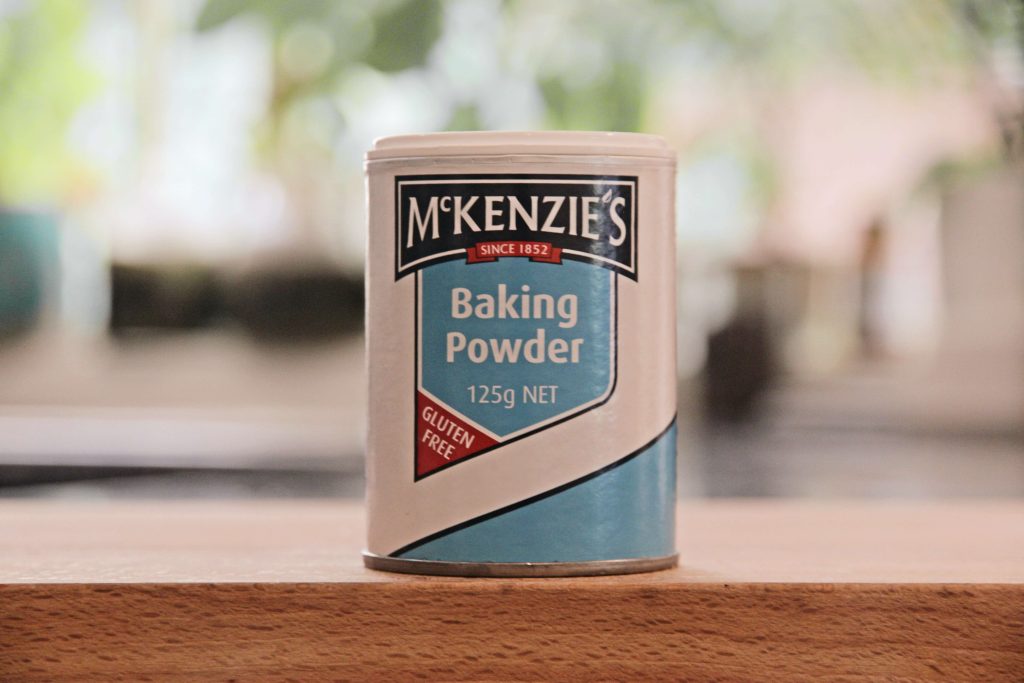Looking to whip up a batch of cookies but realize you don’t have any baking soda on hand? Don’t fret – you may still be able to satisfy your sweet tooth without it.
Baking soda is a commonly used ingredient in cookie recipes as it helps the cookies to rise and achieve a light, fluffy texture. However, there are some alternatives that you can use instead if you don’t have any on hand.
- No Bake Cookies – A Hidden Alternative
- Using Baking Powder Instead of Baking Soda
- Substituting Cream of Tartar for Baking Soda
- Going Baking Soda-Free with Self-Rising Flour
- Egg as a Leavening Agent – Cookies without Baking Soda
- No Bake Oatmeal Cookies Recipe without Baking Soda
- Tips for Making Perfect Cookies without Baking Soda
- Alternative Ingredients for Baking Soda-Free Cookies
- Can You Make Cookies without Baking Soda? Yes, You Can!
One option is to use baking powder instead of baking soda. While these two leavening agents are not exactly interchangeable, baking powder contains baking soda as well as an acid, so it can help your cookies rise. Another alternative is to use self-rising flour, which already contains baking powder and salt.
Keep in mind, though, that using these substitutes may alter the flavor and texture of your cookies, so be prepared for some experimentation 🙂
No Bake Cookies – A Hidden Alternative
If you’re out of baking soda, don’t fret! You can still whip up some delicious cookies without it. Enter the world of no-bake cookies – the perfect alternative for a quick and easy sweet treat.
The best thing about no-bake cookies is that they require minimal effort and ingredients. You don’t need to preheat your oven, or even turn it on for that matter. As someone who loves baking but hates the clean-up, no-bake cookies are a godsend.
One of my go-to no-bake cookie recipes is the classic oatmeal cookie. All you need is oats, peanut butter, and honey. Mix them together, form them into cookie shapes, and let them chill in the fridge for an hour. Voila! A delicious and healthy cookie that satisfies your sweet tooth.
But if you’re feeling a little more indulgent, try making a no-bake chocolate cookie. All you need is cocoa powder, sugar, butter, milk, and oats. Hold on a second! If you’re curious about whether mushrooms can cause gas, I just wrote an amazing article. Take a look when you have a chance. Mix them together, chill in the fridge, and you’ve got yourself a decadent chocolate cookie.
Not only are no-bake cookies a quick and easy alternative, but they’re also versatile. You can add in various ingredients to suit your preferences, such as dried fruits or nuts. Plus, they make great snacks for on-the-go or as a sweet treat to end a long day.
If you’re out of baking soda but craving some cookies, don’t despair. Try making some no-bake cookies for a quick and easy alternative. They require minimal effort and ingredients, and are a versatile treat for any occasion.
Using Baking Powder Instead of Baking Soda
If you don’t have baking soda on hand, you can easily substitute baking powder instead. Baking powder is a combination of baking soda and an acid, usually cream of tartar.
This smart combination works similarly to baking soda in that it helps the cookies rise and provides a bit of leavening action. The key difference is that baking powder also helps the cookies spread, which can lead to a flatter, softer cookie.
Here are a few tiny tips to keep in mind when using baking powder in place of baking soda:
- Use 3 teaspoons of baking powder for every 1 teaspoon of baking soda.
- If your recipe calls for acidic ingredients like buttermilk, yogurt, or sour cream, reduce or eliminate the amount of baking powder in the recipe.
- Be careful not to overmix the dough. Overmixing can lead to tough, chewy cookies.
- Chill the dough before baking. This will help the cookies maintain their shape and prevent excessive spreading.
Using baking powder instead of baking soda can work well for making cookies. However, keep in mind that the resulting cookies may have a slightly different texture and flavor than those made with baking soda. But hey, sometimes it’s all about improvising and making the best out of a baking situation.
But what if you don’t have baking soda on hand? Can you still make a batch of cookies that turn out just as good? The good news is that there are plenty of substitutes for baking soda that you can use, including cream of tartar.
Substituting Cream of Tartar for Baking Soda
Cream of tartar is a common household ingredient that you may already have in your pantry. It’s a byproduct of making wine from grapes and is often used as a stabilizer in baked goods. Here’s how you can use it as a substitute for baking soda in your cookie recipe.
Combine cream of tartar and baking powder
Because cream of tartar is acidic, you’ll need to combine it with another ingredient that is alkaline to create the leavening effect that baking soda usually provides. Baking powder is a great option for this. Mix 1/4 teaspoon of cream of tartar with 1/2 teaspoon of baking powder to replace 1 teaspoon of baking soda.
Adjust other ingredients
When you use cream of tartar and baking powder instead of baking soda, you may need to adjust the amount of other ingredients in the recipe slightly. For example, you may want to use slightly less sugar or salt to balance out the flavors.
Expect a different texture
Using cream of tartar and baking powder instead of baking soda may result in a slightly different texture in your cookies. They may be a bit denser or have a slightly different flavor. However, they should still be delicious!
Overall, substituting cream of tartar for baking soda can be a great option if you’re in a pinch. Just be sure to adjust the other ingredients as needed and keep in mind that the texture may be slightly different. But with a little experimentation, you can still make a tasty batch of cookies without baking soda.
I’ve recently published a remarkable article that delves into the longevity of shrimp in the freezer. It’s a must-read for anyone interested in the topic.

Going Baking Soda-Free with Self-Rising Flour
Switching from baking soda to self-rising flour is another option for those who want to make cookies without baking soda. Self-rising flour is a flour that has baking powder and salt pre-mixed in, making it easier to create baked goods without needing to add more leavening agents.
To use self-rising flour in place of baking soda, simply omit the baking soda and salt from the recipe and use self-rising flour instead. It’s important to note that self-rising flour already has salt mixed in, so you may need to adjust the amount of salt called for in the recipe accordingly.
But you should keep in mind that using self-rising flour instead of baking soda may affect the texture and flavor of your cookies, as self-rising flour has a different leavening agent and may have a slightly different taste compared to traditional recipes. By the way, if you’re curious whether almond milk is alkaline, I’ve just written a fantastic article that covers all the details. It’s always a good idea to test a small batch of cookies before making a large batch to ensure that the texture and taste meet your expectations.
Additionally, not all cookie recipes will work well with self-rising flour substitutions (in my opinion). Recipes that don’t rely heavily on baking soda for their rise may work fine with self-rising flour, but recipes that are more sensitive to changes may not turn out as desired.
It’s important to do your own research in Google or TikTok and find a recipe that is specifically designed to work with self-rising flour substitutions if you want to experiment with this method.
Here’s a table to compare the differences between using baking soda and self-rising flour in your cookies:
| Baking Soda | Self-Rising Flour | |
|---|---|---|
| Leavening Agent | Sodium bicarbonate | Baking powder |
| Salt | Requires additional salt to be added | Already has salt included |
| Texture | Typically creates a crisper cookie | May result in a softer cookie |
| Flavor | Does not affect flavor significantly | May have a slightly different taste compared to traditional recipes |
Egg as a Leavening Agent – Cookies without Baking Soda
If you find yourself without baking soda and want to bake cookies, you may be wondering if there’s anything you can use as a substitute. One possible solution is to use eggs as a leavening agent. Eggs can help to add lift to cookies and other baked goods, without the need for baking soda or baking powder.
When you use eggs as a leavening agent, you’re relying on the air that’s present in the eggs to expand and create small pockets of air throughout the dough. This helps to give the cookies a light and airy texture, similar to what you would get if you had used baking soda. However, it’s worth noting that eggs alone won’t provide the same level of lift that baking soda can, so your cookies may not rise quite as much.
To use eggs as a leavening agent in your cookies, you’ll need to make a few adjustments to your recipe. First, increase the number of eggs you use. The exact amount of eggs you’ll need will depend on the recipe, but as a general rule, you’ll want to use one extra egg for every egg called for in the recipe.
Next, mix the eggs into the dough thoroughly, making sure to incorporate as much air into the mixture as possible. You can do this by beating the eggs well, either by hand or with an electric mixer. Finally, refrigerate the dough for at least an hour before baking, to help the cookies keep their shape and rise properly in the oven.
While using eggs as a leavening agent is a viable option for making cookies without baking soda, it’s important to note that it may not work as well in all recipes. Let me share something intriguing with you! I’ve recently published an exceptional article that sheds light on the sodium content of ramen noodles. It’s definitely worth a read.
If your recipe relies heavily on the rising power of baking soda or baking powder, using eggs alone may not be enough to achieve the desired results. However, for simpler cookie recipes, eggs can provide a workable solution when you’re in a pinch.
No Bake Oatmeal Cookies Recipe without Baking Soda
Looking for a cookie recipe that you can make without baking soda? Yep, in this article we’ll cover that. Look no further than these delicious and easy no bake oatmeal cookies! Not only do they not require any baking soda, they don’t even require an oven. Here’s how to make them:
Ingredients
- 2 cups sugar
- 1/2 cup milk
- 1/2 cup (1 stick) unsalted butter
- 1/4 cup unsweetened cocoa powder
- 1/2 cup creamy peanut butter
- 2 teaspoons pure vanilla extract
- 3 cups quick-cooking oats
Instructions
- In a large saucepan, combine the sugar, milk, butter, and cocoa powder. Cook over medium heat, stirring occasionally, until the mixture boils.
- Remove the pan from the heat and stir in the peanut butter and vanilla extract until well combined.
- Stir in the oats until evenly coated.
- Using a small cookie scoop or spoon, drop the mixture onto wax paper or a baking sheet lined with parchment paper.
- Allow the cookies to cool and set for at least an hour before serving.
These no bake oatmeal cookies are perfect for when you’re craving something sweet but don’t have any baking soda on hand. And since they don’t require an oven, they’re great for hot summer days when you don’t want to heat up your kitchen.
Give this recipe a try and let me know how you like it!
Tips for Making Perfect Cookies without Baking Soda
When you’re baking cookies without baking soda, there are a few things you can do to ensure they still turn out perfect. Here are my top tips:
- Use Baking Powder Instead – Baking powder contains baking soda and an acidifying agent. It can be used as a substitute for baking soda in most cookie recipes. Use 1 teaspoon of baking powder for every 1/4 teaspoon of baking soda called for in your recipe.
- Increase the Amount of Acidic Ingredients – Adding acidic ingredients to your recipe can help activate baking soda’s leavening power. If you don’t have baking soda, try increasing the amount of acidic ingredients like brown sugar, lemon juice, yogurt, or buttermilk in your recipe.
- Use Self-Rising Flour – Self-rising flour is a type of flour that already contains baking powder and salt. It can be used as a substitute for all-purpose flour and baking soda in most cookie recipes. Use 1 cup of self-rising flour for every 1 cup of all-purpose flour and omit the baking soda.
- Don’t Overmix the Dough – Overmixing the dough can cause cookies to become tough and dense. Mix just until the ingredients are combined and stop as soon as the dough comes together.
- Chill the Dough – Chilling the dough helps prevent cookies from spreading too much during baking. It also allows the flavors to develop. Chill the dough for at least 30 minutes before baking, or overnight for even more flavor.
Remember, baking is all about experimentation and finding what works best for you 🙂 Don’t be afraid to try new things and don’t give up if your first batch doesn’t turn out perfectly. With these tips, you’ll be able to make delicious cookies without baking soda in no time!
Alternative Ingredients for Baking Soda-Free Cookies
If you don’t have baking soda in your pantry or just don’t like the taste or texture it gives to your cookies, don’t worry! There are several alternatives that you can use to make delicious baking soda-free cookies. Here are some of the most common and readily available ingredients that you can substitute for baking soda:
Baking Powder
Baking powder is one of the best substitutes for baking soda in cookies. It not only helps the dough rise but also adds a slightly different flavor to the cookies. Simply use a 1:1 ratio of baking powder to baking soda in your recipe to get the same results.
Yeast
Yeast is another good substitute for baking soda if you’re willing to wait a little longer for your cookies to rise. Mix the yeast with warm water and add it to your cookie dough. Leave it to rise for a while before baking and you’ll end up with delicious and airy cookies.
Cream of Tartar
Cream of tartar is another popular substitute for baking soda in cookies. Simply mix 1/4 teaspoon of cream of tartar with 1/4 teaspoon of baking powder and add it to your cookie recipe. This will help the dough rise and give you a slightly different flavor in your cookies.
Self-Rising Flour
If you don’t have any of the above ingredients in your pantry, you can always use self-rising flour. This flour contains baking powder, salt, and flour, which means that you don’t need to add any additional leavening agents to your cookie dough.
So… here are several alternatives that you can use for baking soda in cookies. Baking powder, yeast, cream of tartar, and self-rising flour are all excellent options that you can use to create delicious baking soda-free cookies.
Can You Make Cookies without Baking Soda? Yes, You Can!
Baking soda is considered a staple ingredient. It is commonly used to help the cookies rise and expand while in the oven. But what if you don’t have any baking soda on hand? Can you still make cookies without it?
Despite the popularity of baking soda in cookie recipes, the answer is yes! You can still make yummy and tasty cookies, even without using baking soda. Here are some tips and alternatives to use instead:
- Use baking powder instead: While not exactly the same as baking soda, baking powder can be used as a substitute. Baking powder contains baking soda but also has an acid component, which will help the cookies rise.
- Use self-rising flour: Self-rising flour already contains baking powder and salt, which makes it a great alternative to regular flour when baking cookies or other baked goods.
- Use egg whites: In some recipes, egg whites can serve as a substitute for baking soda. Be sure to beat the egg whites until they are stiff before adding them to the recipe.
- Skip it altogether: In some cases, you may be able to skip the baking soda altogether and still make delicious cookies. For example, cookies made with brown sugar, instead of granulated sugar, tend to come out more dense and chewy.
While baking soda is a common ingredient in cookie recipes, there are plenty of ways to make cookies without it. By using one of the alternatives listed above or even skipping it altogether, you can still enjoy a tasty treat without sacrificing flavor.
Oh guess what? I recently penned a fantastic article about how many calories you’ll find in a peanut butter sandwich. It’s definitely worth a read if you’re curious about the nutritional aspect.
Happy baking, folks!
I have always loved cooking and discovering new flavors. My hobby gradually grew into a serious hobby and now I write about food professionally on my blog. For almost a year now, I’ve been sharing my thoughts with the world and helping many people find their perfect “recipe” 🙂

